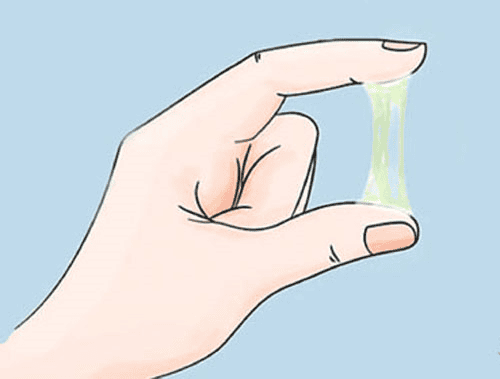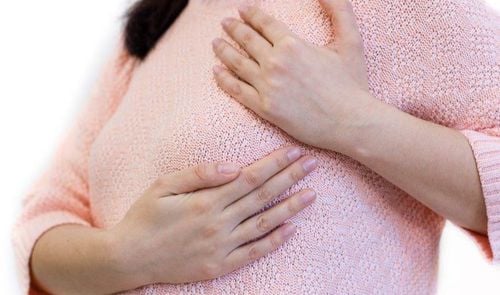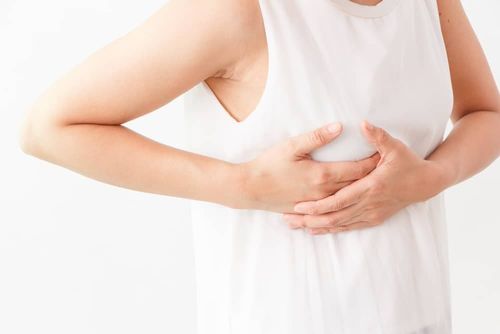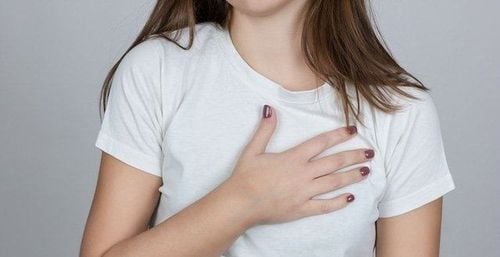This is an automatically translated article.
Breast abscess is the most serious complication, the result of mastitis that is not well treated due to many causes, of which it is most common in lactating women. Primarily stemming from blocked milk ducts, purulent inflammation creates pockets of pus in the breast. The main method of treatment is incisional injection. After how long after injecting the abscess, breastfeeding is a question of many mothers.
1. Learn about breast abscess
Breast abscess is caused by bacteria, in which the most common are staphylococcus and streptococcus, less commonly pneumococcal, gonococcal, typhoid bacilli, anaerobic bacteria. When the body's resistance is reduced due to illness, lack of food, staying up late at night, working hard and getting little rest... stagnation of milk in the mammary glands are the main factors that cause breast abscess in women. women .
Pathogenic bacteria can enter the mammary gland directly from the skin through the milk ducts or the sores in the nipple and areola area; indirect route: bacteria from an infection elsewhere in the body through the blood or lymphatic route to cause breast abscess.

Có nhiều loại vi khuẩn gây ra bệnh áp xe vú
Location of abscess can be before the gland, in the gland, behind the gland. An abscess usually undergoes two stages of inflammation and the formation of an abscess and gangrene of the breast.
Clinical manifestations of breast abscess are mainly swelling, heat, redness and pain:
First stage: Mainly deep pain in the mammary gland, pain increases on examination, when moving shoulders and arms. The inflamed breast is enlarged, the density is firm, the lymph nodes in the armpit on the same side are enlarged and painful. The skin over the inflammatory site may be normal if the inflammation is deep in the gland, and it may be hot, red, and edematous if the inflammation is located just below the skin or on the surface of the gland.
Abscess formation stage: These are localized pockets of pus in the breast that form due to tissue necrosis. Symptoms of the inflammatory phase are increased, such as signs of infection and toxicity. At the site of breast enlargement, the skin on the abscess is usually hot, tight, red, or purple edema. If the abscess connects to the milk ducts, milk and pus may be seen flowing through the nipple.
2. How to treat breast abscess?
Rest, Systemic antibiotics in combination with anti-inflammatory drugs, Pain relief. Physiotherapy: Massage, hot compress. When a localized abscess has formed, it is necessary to make an incision and drain the pus. When injecting drainage breast abscess, attention should be paid to breaking the fovea of pus. For superficial abscesses under the skin, in the areola area, squeeze the pus. Adrenal abscesses require local anesthesia or anaesthesia, and inject the abscess along the spokes at the lowest point on the abscess.
3. Breast abscess injection can breast-feeding?
As a rule, when an abscess is created, there is a sheath around it. The remaining ducts that carry milk from the mammary gland to the nipple will not be affected by the abscess. Therefore, it is completely possible to breastfeed from both breasts, except in the case of an abscess near the nipple. To avoid recurrence of mastitis and breast abscess, the baby needs to breastfeed regularly, suck on both breasts, and if the breast does not finish, express milk by hand.

Cho bé bú mẹ bình thường sau khi chích áp xe vú
4. Prevention of breast abscess
To avoid breast abscess during lactation, it is necessary to:
Maintain good hygiene in the breast area before and after breastfeeding. Feed the baby properly, do not let the breast chew for a long time. Do not damage the nipples, avoid stagnation of milk, clogged milk ducts. Breastfeeding early and sucking all the milk from both breasts, not having to pump all the milk to avoid stagnation and stimulate new milk production. Relieve breast tenderness by: Using warm compresses on the breast before feeding, massaging the mother's neck and back, the mother expressing a little milk before feeding and wetting the nipple to help the baby suckle more easily. After feeding, support the breast with a breast pad, and apply cold compresses to the breast between feedings. Weaning: Gradually reduce breastfeeding, drink less water. Breast abscess if untreated or improperly treated can cause chronic fibrocystic mastitis complications, due to prolonged antibiotic use in the abscess stage or as a result of direct injection of antibiotics into the mammary gland. for the treatment of breast abscesses; Breast gangrene is caused by highly virulent bacteria or by gangrene bacilli.
If you have unusual symptoms, you should be examined and consulted with a specialist.
Please dial HOTLINE for more information or register for an appointment HERE. Download MyVinmec app to make appointments faster and to manage your bookings easily.













